February 4th, 2022
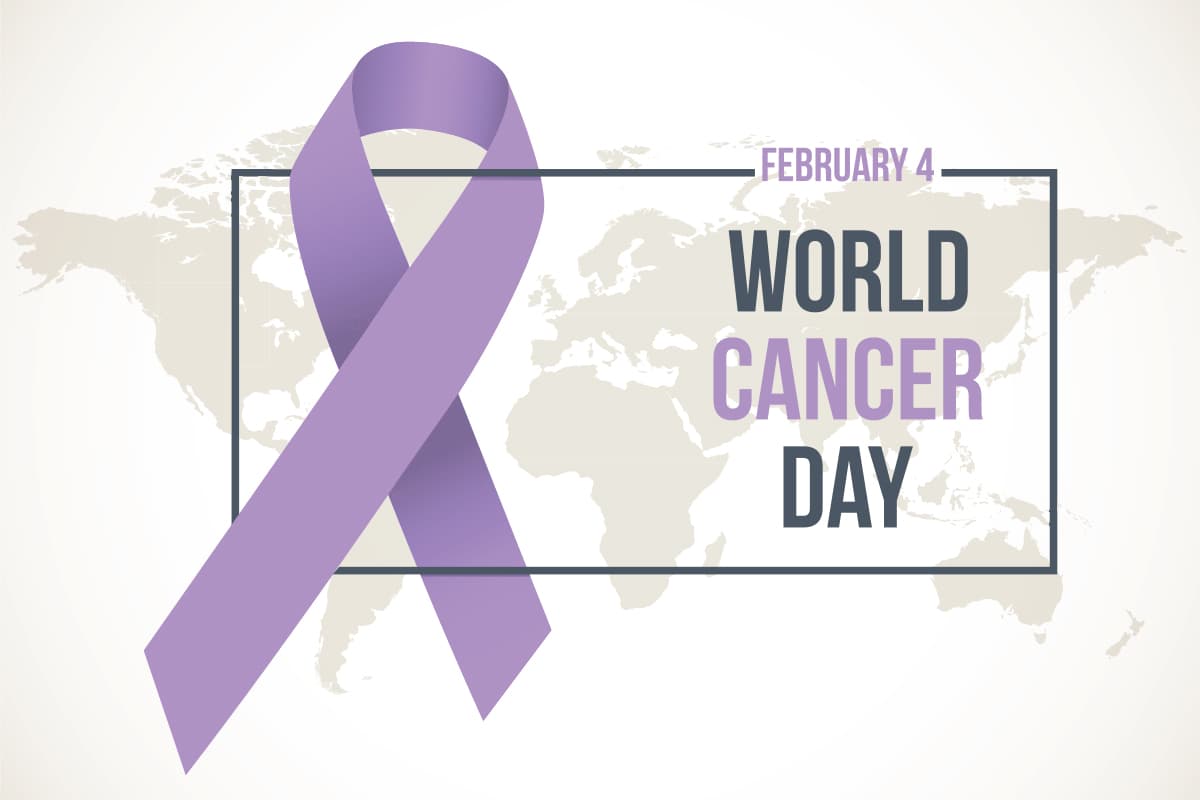
February 4th is World Cancer Day. What does this word mean to you? The word “cancer” evokes many emotions for myself - anger that it’s robbed me of too many loved ones, and fear for myself, my relatives, and my children. It also evokes empathy towards others whose lives has been impacted by this terrible disease. Today, I wanted to share some interesting facts about cancer, carcinogens, and how we can lower our risk for cancer.
Part 1 - 5 Interesting Facts About Cancer
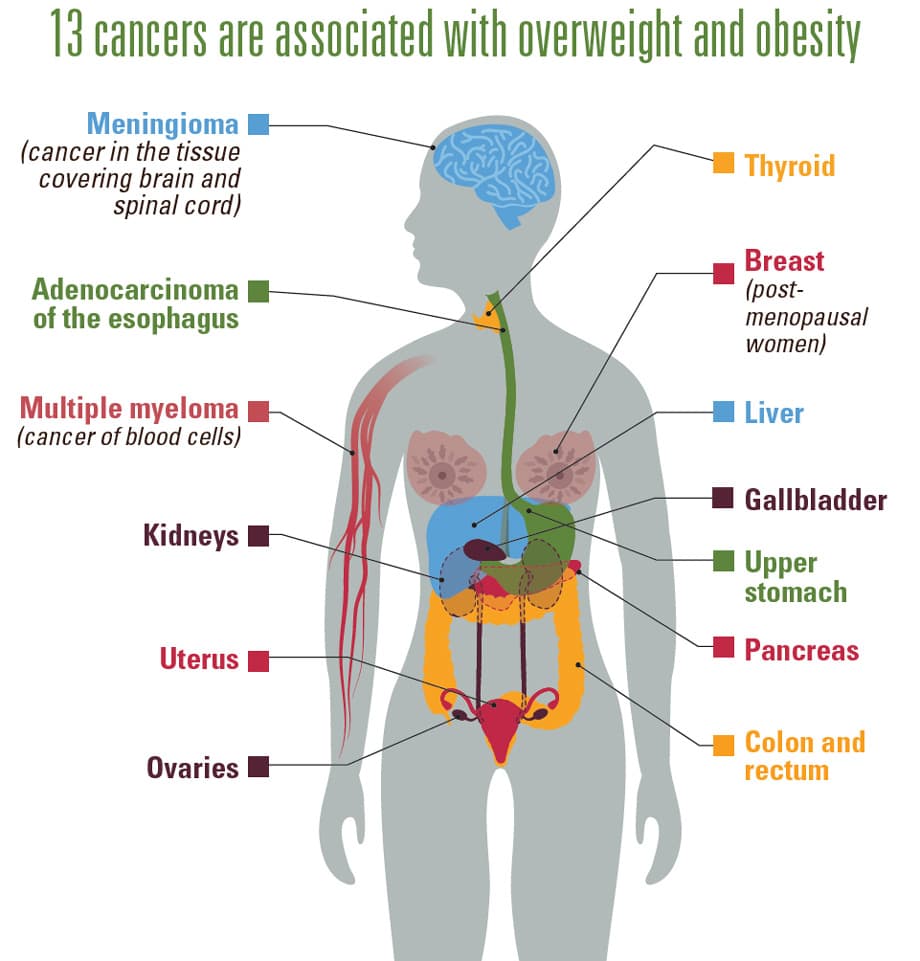
Part 2 - What are carcinogens? (6)
A carcinogen is an agent with the capacity to cause cancer in humans. Carcinogens may be natural (e.g. aflatoxin, which is produced by a fungus). Carcinogens may also be synthetic. An example of this would be bisphenol A (i.e. BPA).
There are two commonly used systems for classifying and identifying carcinogens. The International Agency for Research on Cancer (IARC) is part of the World Health Organization (WHO) and has evaluated more than 1,000 agents on their cancer-causing potential. Only a little over 100 agents are classified within “Group 1 - carcinogenic to humans.” Most items they have evaluated are listed as “Group 2A - probably carcinogenic to humans”, “Group 2B - possibly carcinogenic to humans” or “Group 3 - unknown risk”.
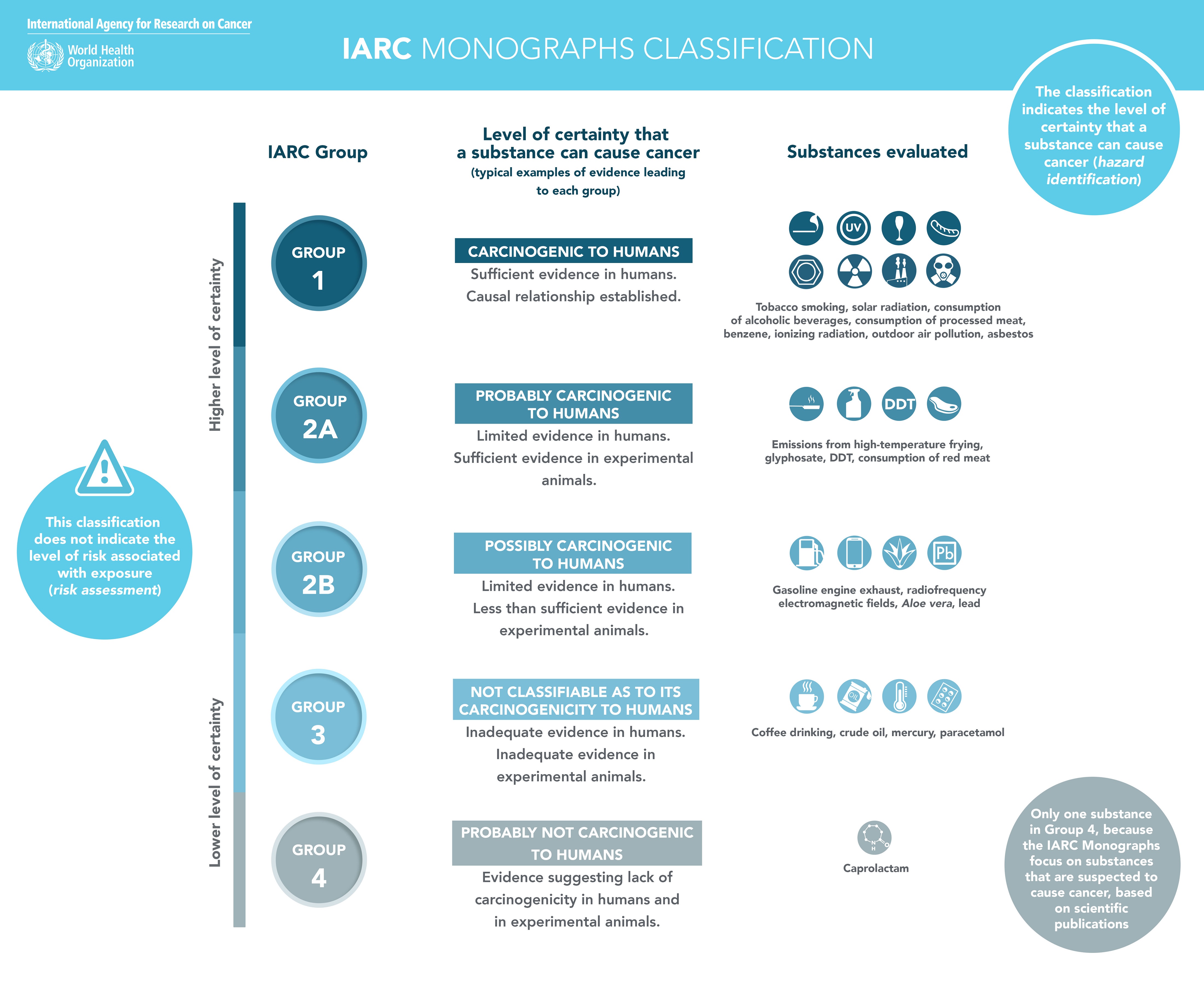
IARC Monographs Classification of Night Shift Work: Source.
In this monograph, the IARC classified Night Shift Work as “Probably Carcinogenic to Humans”.
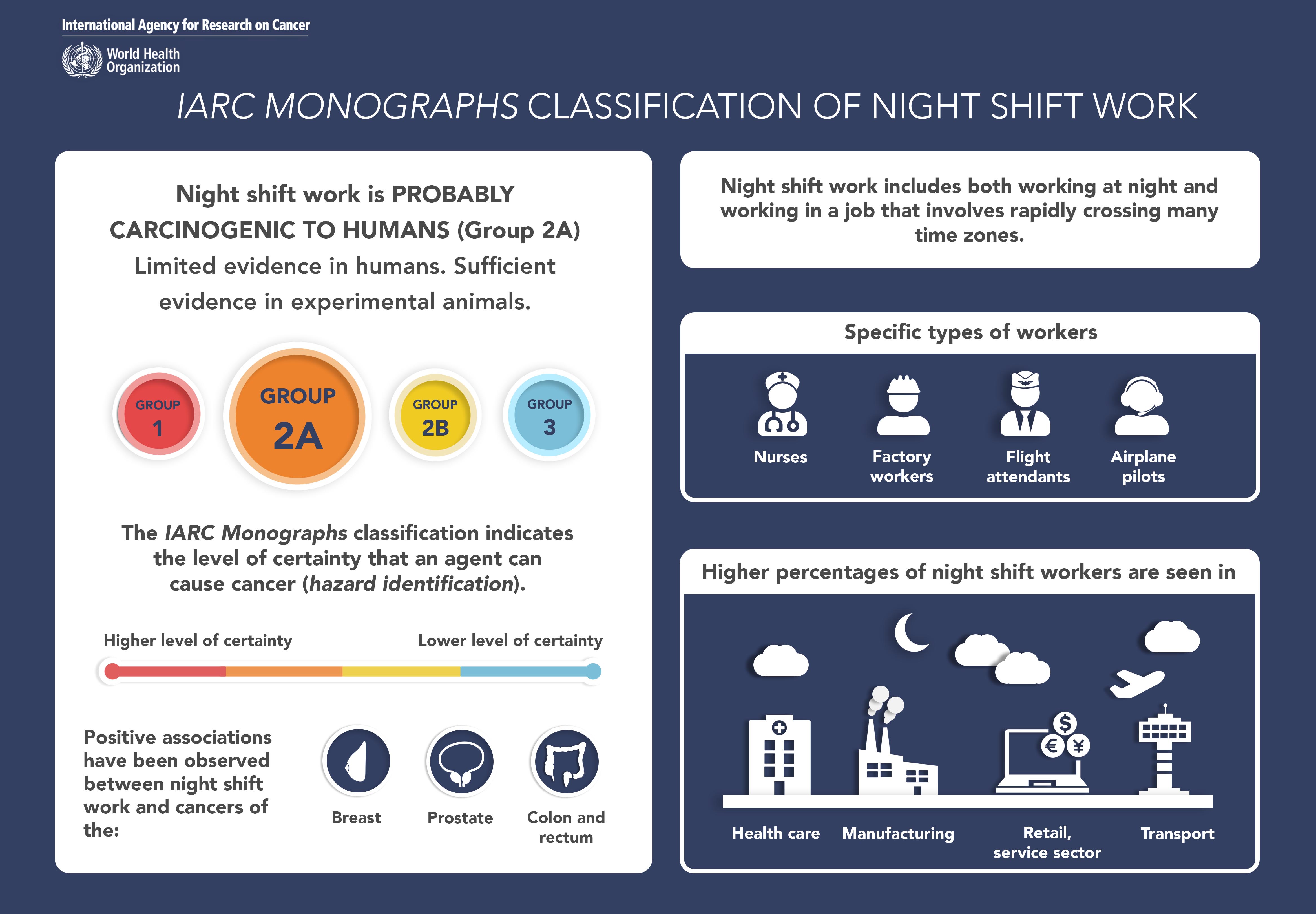
One limitation of the IARC classification system is that it does not assess the risk associated with exposure. For example, IARC classifies tobacco smoking as carcinogenic, but does not assess how much (5 cigarettes vs. one pack-per-day), or how long. Also, two things may belong in the same classification group (e.g. tobacco smoking and consumption of processed meats), but the risk of cancer from exposure will differ. In other words, smoking cigarettes every day does not confer the same cancer risk as eating 2 slices of bacon every day.
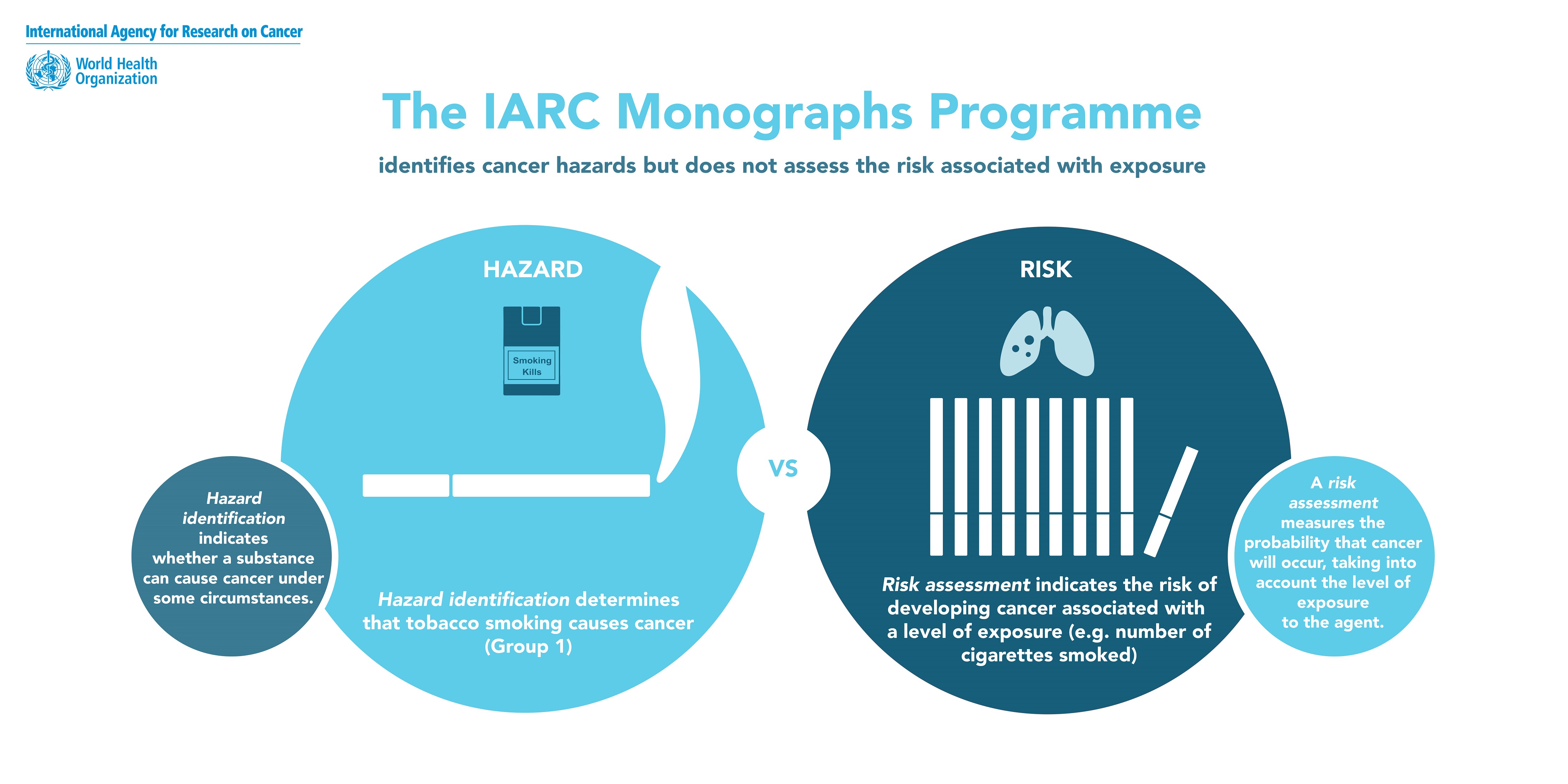
Compound Interested created a short and sweet post explaining this in a bit more detail. Click the image below or read it here.
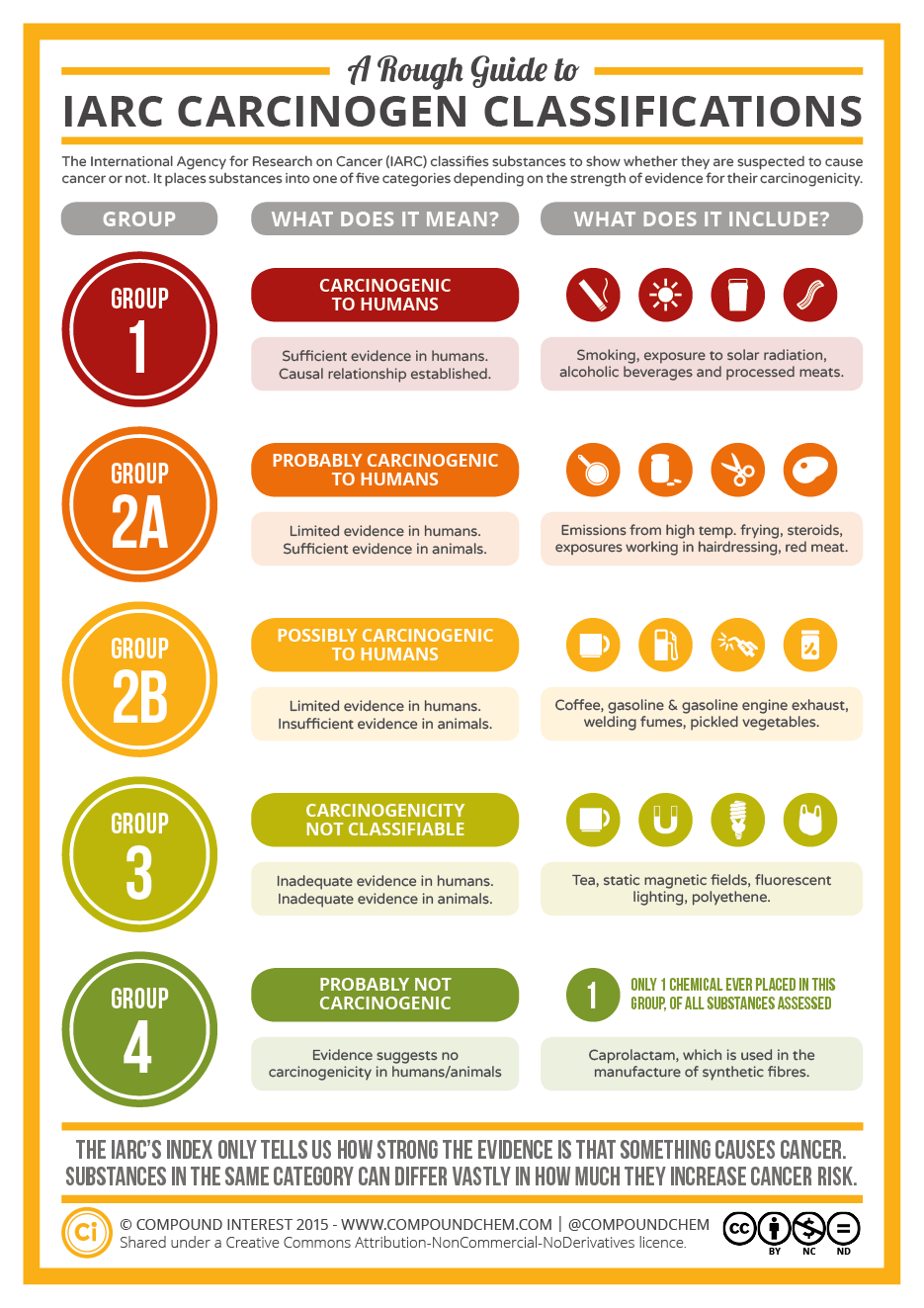
A Rough Guide to IARC Carcinogen Classifications. Full post here.
The National Toxicology Program (NTP) is formed from parts of several US government agencies, including the National Institutes of Health (NIH), the Centers for Disease Control and Prevention (CDC), and the Food and Drug Administration (FDA). The NTP updates its Report on Carcinogens (RoC) every few years.
The Report on Carcinogens (RoC) identifies 2 groups of agents:
The 15th edition of the RoC includes about 250 substances and exposures.
Instead of looking at substances in isolation (individually), The Halifax Project was published in the journal Carcinogenesis in 2015 and hypothesizes that the same biological mechanisms by which many known carcinogens cause cancer can also be achieved through the combined effects of multiple chemicals (at low doses). This study was conducted by several hundred scientists from around the world. (7)
In simple terms, their hypothesis is that low-dose exposures to disruptive chemicals that are not individually carcinogenic may be capable of instigating and/or enabling carcinogenesis through its combined effects.
What is highly concerning is that we are exposed to chemicals everywhere. The purists will say “All things are chemicals. Water is H2O.” While they’re not wrong - I will use the term “chemicals” here to be interpreted as the harmful kind. From what we slather on our skin (e.g. creams, skincare, lotions, body wash, makeup), to what we breathe in (e.g. perfumes, scents, car air freshener), to what we use to clean our home, we are exposed to and subjected to a surprising amount of unique chemicals each day.
According to the FDA.gov website, cosmetic products and ingredients do not need FDA approval before they go on the market. Under U.S. law, cosmetic products and ingredients, other than color additives, do not need FDA approval before they go on the market. (8) Cosmetic manufacturers have a legal responsibility for the safety and labeling of their products. The FDA also doesn’t test the ingredients of these products for efficacy or safety. Of the more than 40,000 chemicals used in consumer products in the US, according to the Environmental Protection Agency, less than 1% have been rigorously tested for human safety. (9)
Bottom line: Don’t let the labels fool you. You are the biggest advocate for the health and wellbeing of you and your family. Look up the ingredients for safety.
Part 3 - 5 Ways to Lower Your Cancer Risk (10) (4)
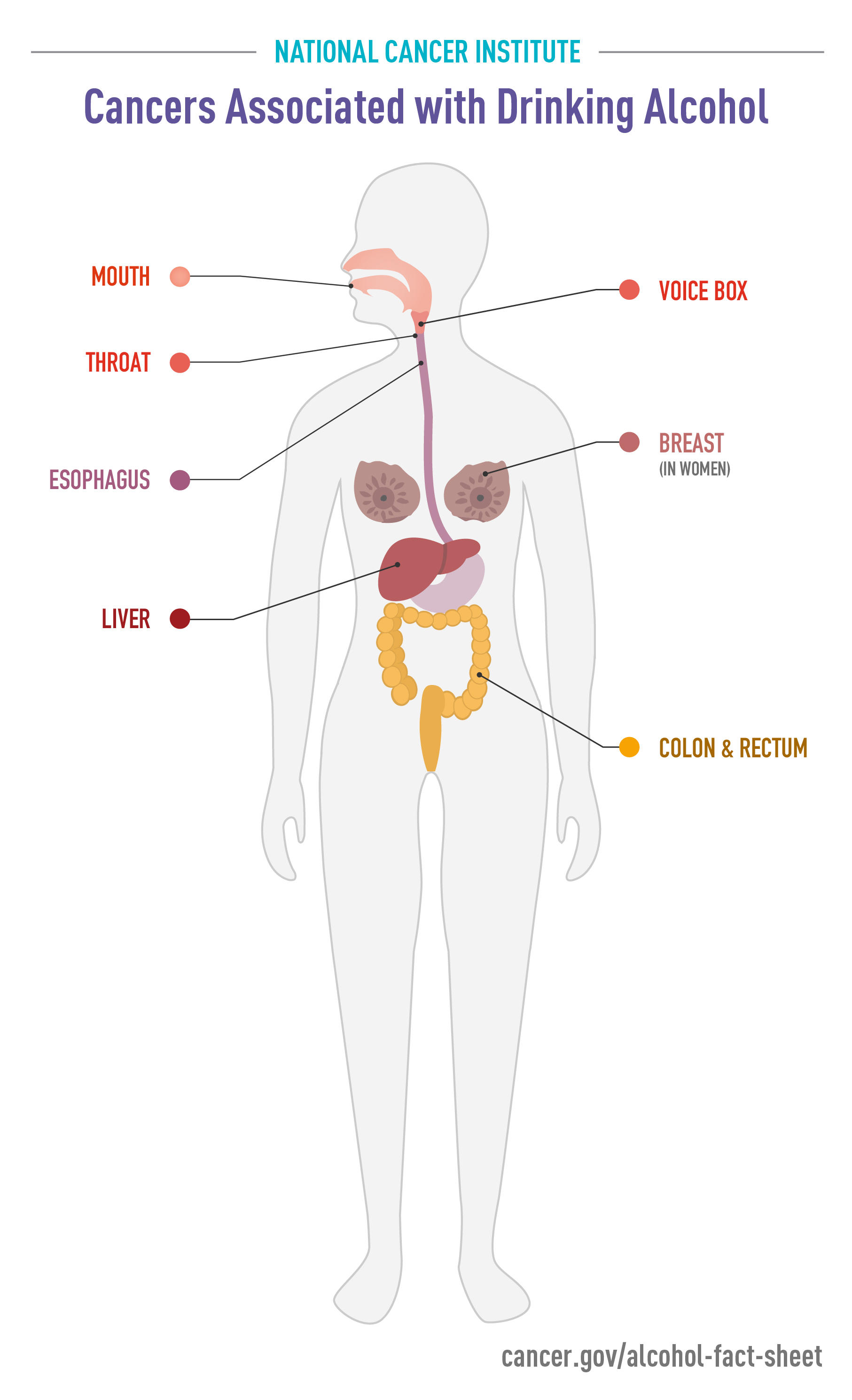
National Cancer Institute: Alcohol Fact Sheet Source.
As we learn more and more about cancer, I feel another emotion within me - hope. We are detecting and screening for cancers earlier. We have so many more treatment options compared to just 10-15 years ago. We are learning more about our genetics (the “seed”), our environment, and how we can influence the conditions (the “soil”) to reduce our risk for cancer. Together, let’s work on our “soil” so that disease cannot thrive.
If you enjoyed this blog post and are interested in learning more about all things health related, be sure to read my previous posts and follow me on Instagram, Twitter, and Facebook.
Yours in health,
- Janet
References:
Copyright © 2022 JCL Wellness.
All rights reserved.